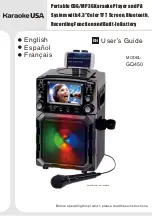
8695 9001 / E
F-8
SP20/SP45 - MP2/MP5
F - USING
SP20/45
AND
MP2/5
TORCHES
1 - CHOOSING THE CONSTRICTING NOZZLE
This choicemust bemade according to the assembly to be welded and is
characterised firstly by the thickness and secondly by the grade of thematerial to be
welded which requiresmore or less energy.
Manual and automatic welding modes can equally well be used, although
automatic welding is generally used at a higher speed than manual welding.
Automatic welding, in the same context, uses higher arc currents.
These criteria determine the necessary current level which in turn determines the
best adapted constricting nozzle orifice diameter.
In all cases, the current ranges, depending on orifice diameter, are the following:
Constricting
nozzle diameter
Min current
Max current
0,6 mm
0,3 A
6 A
0,8 mm
6 A
12 A
1,0 mm
9 A
18 A
1,2 mm
12 A
25 A
1,5 mm
18 A
36 A
1,8 mm
25 A
45 A
To determine an operating point for an assembly to be welded, we recommend that
you carry out a test with large orifice constricting nozzle and then change to a smaller
orifice if the current which seems ideal does not con formthe above table.
2 - CHOOSING ELECTRODESTIPPINGFITTINGTO THE TORCH
The diameter 1 mm electrode must be used for currents less than or equal to 20 A.
The
SP 20/45
accessory kit contains electrodes 150 mm long.
Electrodes 150mmlong can be fitted using a long electrode clampin g plug which is
not supplied in the kit (see reference in spare parts list).
At spares level, we recommend that you order the electrodes whose references
also appear in the expendable items list.
The quality of these electrodes, which contain 2% thorium oxide, associated with
the efficiency of the
NERTAMATIC 50
or
PLASMAFIX 51
arc striking system, ensure
that the pilot arc lights cleanly and that the plasma arc.
Since tungsten oxidise very easily when hot, the electrodes must constantly be
shielded under neutral gas, including during the cooling period which follows welding
stop.










































